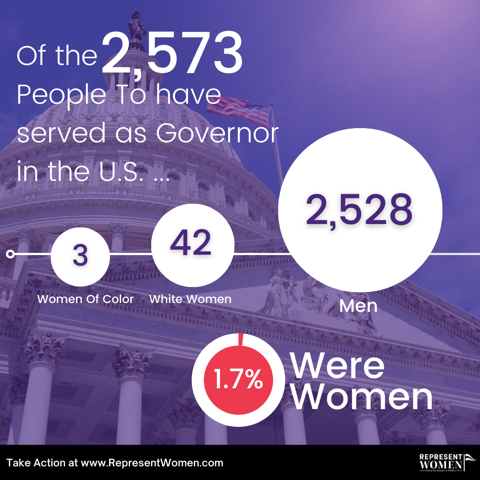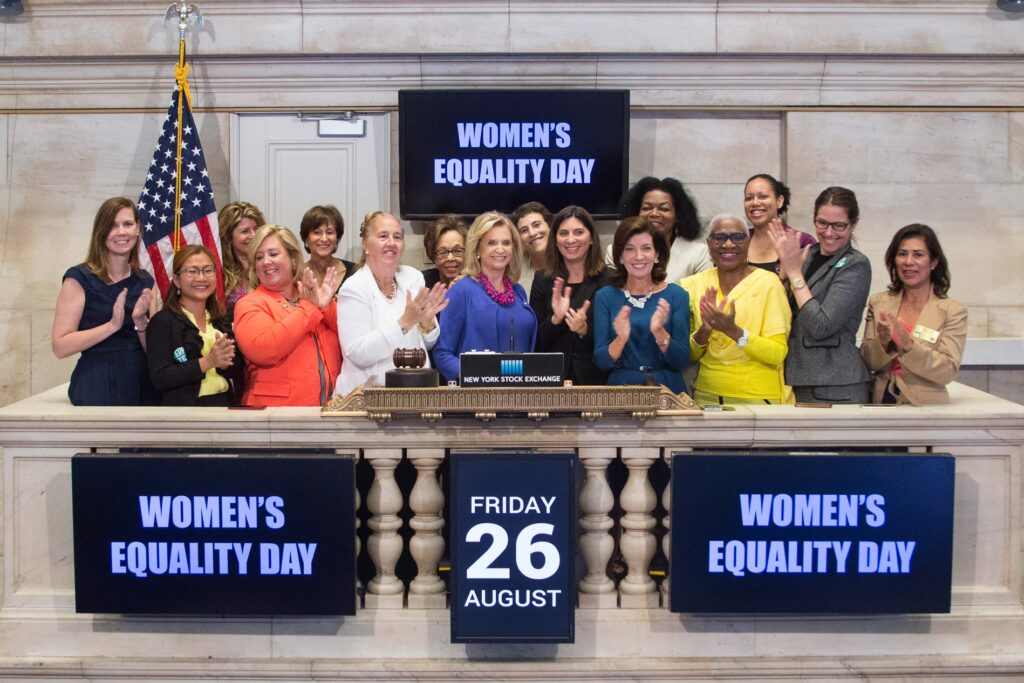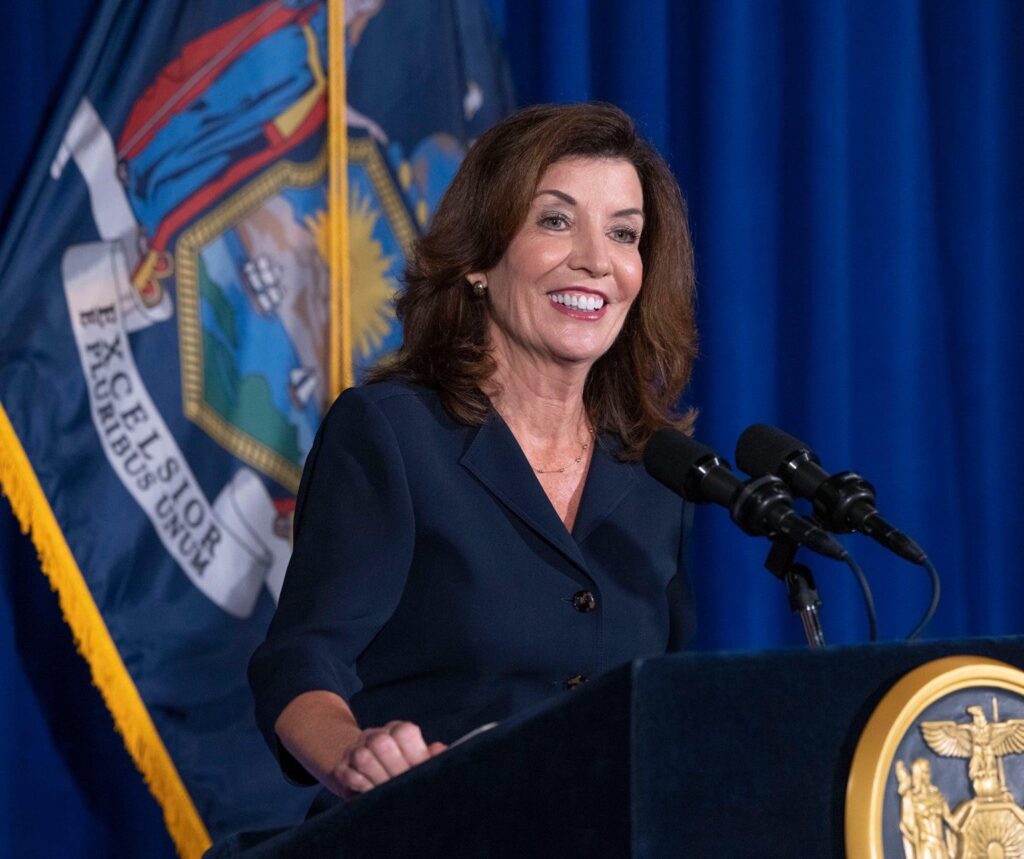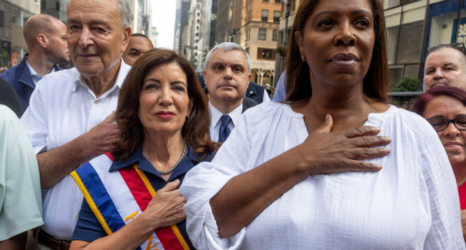Updated Tuesday, Aug. 24, at 9:10 a.m. PT.
We need serious strategies for getting more women in statewide executive offices that move beyond the hope that a male governor may resign and leave a woman in his wake.
Honored to be officially sworn in as New York’s 57th Governor.
— Kathy Hochul (@GovKathyHochul) August 24, 2021
Looking forward to the full swearing-in ceremony with my family later this morning, and addressing the people of New York later today. pic.twitter.com/RUsDtzoW7r
On Tuesday, Kathy Hochul joined an exclusive club: the club of women governors. With just eight current members, Hochul made history as the first woman governor of New York state, bringing the number of women governors back up to the record: nine out of 50. (There have been 45 total in the history of the United States.)

Hochul has had a long political career, starting as a political aide in the 1980s and ’90s to former Rep. John Lafalce (D-N.Y.) and Sen. Daniel Patrick Moynihan (D-N.Y.). In the 2000s, Hochul returned to her home state of New York were she worked in local government in several elected positions until running for Congress in 2011. Hochul won New York’s most conservative House district in 2010, only to lose re-election following a redistricting process that put it solidly in the Republican column. In 2014, Governor Cuomo, who was running for his second term, added Hochul to the ticket as lieutenant governor hoping to shore up support in Western New York and setting up Hochul as his current successor.
Throughout the Cuomo administration, Hochul has remained largely under the radar, preferring smaller political events and meeting constituents across the state one-on-one. Since 2014, Hochul has visited all 62 counties in New York at least once a year. Throughout her tenure as lieutenant governor, the distance between Hochul and Cuomo has been tangible—a distance which has become more evident since the sexual harassment allegations against Cuomo became public in late 2020.
Many news stories and advocates fighting to bring gender balance to elected positions focus on the federal level: the House of Representatives, the Senate and the presidency—a practice that drives more readers, interest and funders nationally, but often at the cost of underreporting on the continued lack of women in statewide executive positions.

Although gender balance at the federal level remains an important and essential goal, increasing women’s representation at the statewide level is just as vital. Statewide executives and governors in particular continue to hold a lot of power especially during the era of COVID when mask and vaccine mandates, aid distribution and Medicare/Medicaid expansion are left entirely up to a governor’s discretion.
Along with gender balanced representation at the state level being an important step toward women’s equality, many studies conducted around the world have shown women make as good and often even better leaders than men, especially during times of crisis. Research done by the University of Liverpool and the University of Reading has shown countries with women executives have done a better job addressing the COVID-19 pandemic, and early research in the U.S. suggests this is true of U.S. states led by women governors.
States are laboratories for democracy and democracy reform—in fact, most of the reforms included in the For the People Act have already been passed and implemented with great success at the state level—in both Democratic- and Republican-leaning states. We need similarly serious strategies for getting more women in statewide executive offices that move beyond the hope that a male governor may resign and leave a woman in his wake.

Party leaders, donors and other gatekeepers must work with one another and with democracy reform groups to ensure that not only are more women running for positions at every level but they are doing so on a level playing field.
Reforms which would help to speed up the process toward gender balance among governors include:
- Gender-balanced tickets: While it is not ideal that currently half of the women governors in the U.S. rose to the position following a male governor’s resignation, gender-balanced tickets would ensure women are prepared to assume the office if needed. Additionally, gender-balanced tickets would help to normalize women in leadership positions and expand the pipeline of women we see as “eligible, prepared and qualified” for gubernatorial, federal and even presidential positions.
- Gubernatorial term limits: Four of the current women governors won their seats running in open-seat races—races which women and all political newcomers have a higher likelihood of winning.
- Ranked-choice voting: has a proven track record of levelling the electoral playing field for women and BIPOC candidates mitigating the benefits for white, male incumbents ingrained in the U.S. political system. In fact the first woman governor of Maine, Janet Mills, won the democratic nomination in a ranked-choice election.
Kathy Hochul’s ascension to the New York governorship is an historic moment for the state of New York and a small step in the right direction for the United States as a whole. But until the the entrenched structural barriers women face in politics are eliminated with systemic and intentional action, women’s representation at the gubernatorial level may be just as reliant on a male governor’s resignation as it is on a woman candidate’s qualifications.
Up next:





